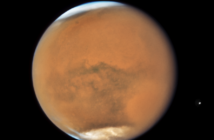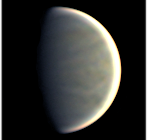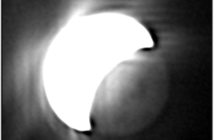I have recently found again some blog articles posted on the web site of the Planetary society. This site welcomes several blogs, among them one held by Emily Lakdawalla who regularily publishes posts of excellent quality about planetary news – her Uranus articles are especially fine and they should be useful for us planetary imagers…
Uranus is a planet that is becoming a more regular target of observation by skilled amateurs, who are now imaging bands on its surface in red light. I always advocate that to be a good observer you have to be become a bit knowledgeable about planets, what we can see and what is happening on them. But where can we find relevant informations about a planet that even scientists are just beginning to discover ? Emily Lakdawalla’s blog and a few other guest blogs offer us such quality information and I recommend you to read them.
From the disappointment of Voyager 2 to the discovery of an active world
The Voyager 2 Uranus fly-by happened in 1986. After the spectacular Saturn and before the surprise of the dynamical atmosphere of Neptune three years later, the probe returned images of an almost featurless fuzzy globe, the sign of a very weak level of activity.
We generally blame the very special axis tilt of the planet for that. The polar axis of Uranus is almost parallel to the plane of its 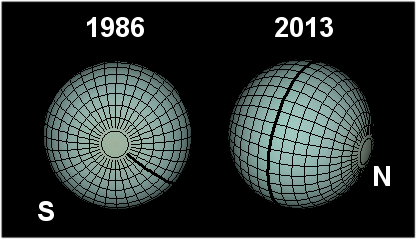
The Hubble space telescope has been taking regularily images of Uranus but the most spectacular results came from the Keck observatory thanks to the use of adaptive optics. In the article “No longer boring” we learn that the permanent exposition of one pole to the Sun in 1986 probably created “a haze covering the southern hemisphere [that set up]a stratified atmosphere that [prevented]convection”. The situation changed during the 2000’s when the Keck began to observe in infrared several small bright spots that marked the onset of convection (convection forms when the temperature is not the the same between air masses).
What perspectives for us amateurs?
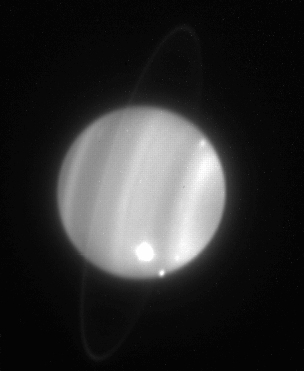
Today the level of resolution reached by the best amateur images (see below) could be enough to detect those storms providing they develop to similar dimensions. Moreover, the following of variations in width or brightness of the belts is certainly within our grasp. Indeed no, Uranus is no longer a boring planet!
Comparison of one of the images taken at the Pic du Midi in 2011 with the bright spot (copyright: S2P/IMCCE/OMP/Dauvergne/Rousset/Colas/Meza/Tozi) and a selection of the best amateur images taken in 2013 by Albéric de Bonnevie, Jean-Pierre Prost, Damian Peach and Stefano Quaresima. Click to see full size.


